
Whilst the initial decision to redevelop Elephant & Castle was taken behind closed doors in June 1998, it was formally designeated an 'Opportunity Area' in Southwark's 2002 Unitary Development Plan and its 2002 E&C SPG.
The subsequent 2002 Masterplan pledged that all of the Council homes lost through the redevelopment of the Heygate estate would be replaced, 50% of which on the redeveloped estate footprint:

Developer and E&C shopping centre owner Godfrey Bradman was selected by the Council as its development partner and he delivered a presentation to the Heygate TRA saying: "This whole project is only possible by you, the Heygate residents. We understand that it is the redevelopment of the existing housing on the Heygate estate which provides the opportunity to regenerate the Elephant & Castle - and we are committed to providing new and better homes for you and your families who currently live here."
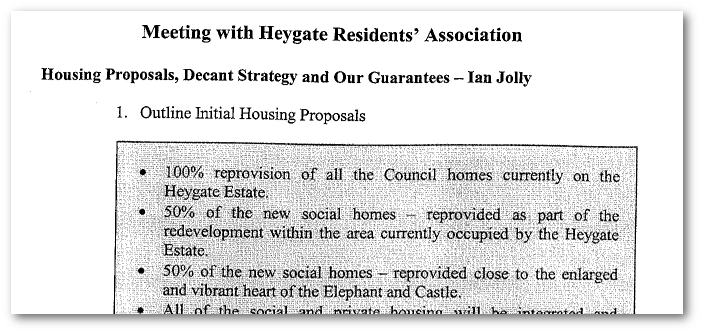
Bradman's presentation promises "100% reprovision of all the council homes currently on the Heygate estate". This is subsequently echoed in the 2002 masterplan:
 Source: SLR 2002 Masterplan
Source: SLR 2002 Masterplan
The proposals were subsequently cemented in planning policy. The 2003 SPG - Framework for Development promised "28.5% social rented housing, comprising a total of 1200 units at E&C":
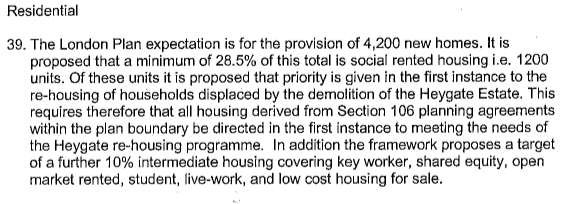
The Council's Regeneration Magazine trumpeted that 50% of new homes at Elephant and Castle would be affordable:
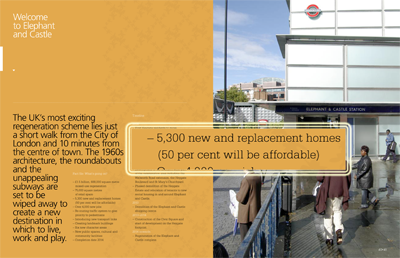
But two years later, Southwark pulled the plug on the Godfrey Bradman scheme citing disputes over the profit share arrangement as the cause. The council then instructed MAKE architects to draw up a new masterplan and started the process of seeking a new development partner.
Australian developer Lendlease was then selected as the Council's development partner. The contractual agreement with Lendlease required them to build just 25% affordable housing, which is below the Council's 35% minimum requirement.
Then Southwark Council rolled over even further to Lendlease, allowing it to water down the tenure split to include affordable rent (80% market rent) instead of social rent.
Now of the 5,937 new homes being built at the Elephant, a grand total of 298 will be social rent (4%) and a question mark hangs over whether half of these will be built by the developer or at the council's cost. Doubt also remains over the question of whether the small number of social rented homes built to date have been provided as such and not at 80% market rent.
| Scheme | Social Rented | Total Homes |
|---|---|---|
| Strata Tower | 0 | 408 |
| Eileen House | 0 | 335 |
| One the Elephant | 0 | 284 |
| Uncle (360 Tower) | 79[^1] | 457 |
| Shopping Centre/UAL | 119 | 983 |
| Elephant Park (Heygate) | 100 | 2924 |
| Elephant One (Tribeca) | 0 | 546[^2] |
| Total: | 298 | 5,937 |
The Council's planning policy for the Elephant and Castle requires a minimum of 17.5% of new homes to be social rent. Had it stuck by its planning policy then these schemes would have provided over a thousand much-needed new social rented homes at no cost to the Council.
Instead, over a thousand council homes elsewhere in the borough have been taken up by the diaspora of former Heygate tenants, who were originally promised new homes at the Elephant.
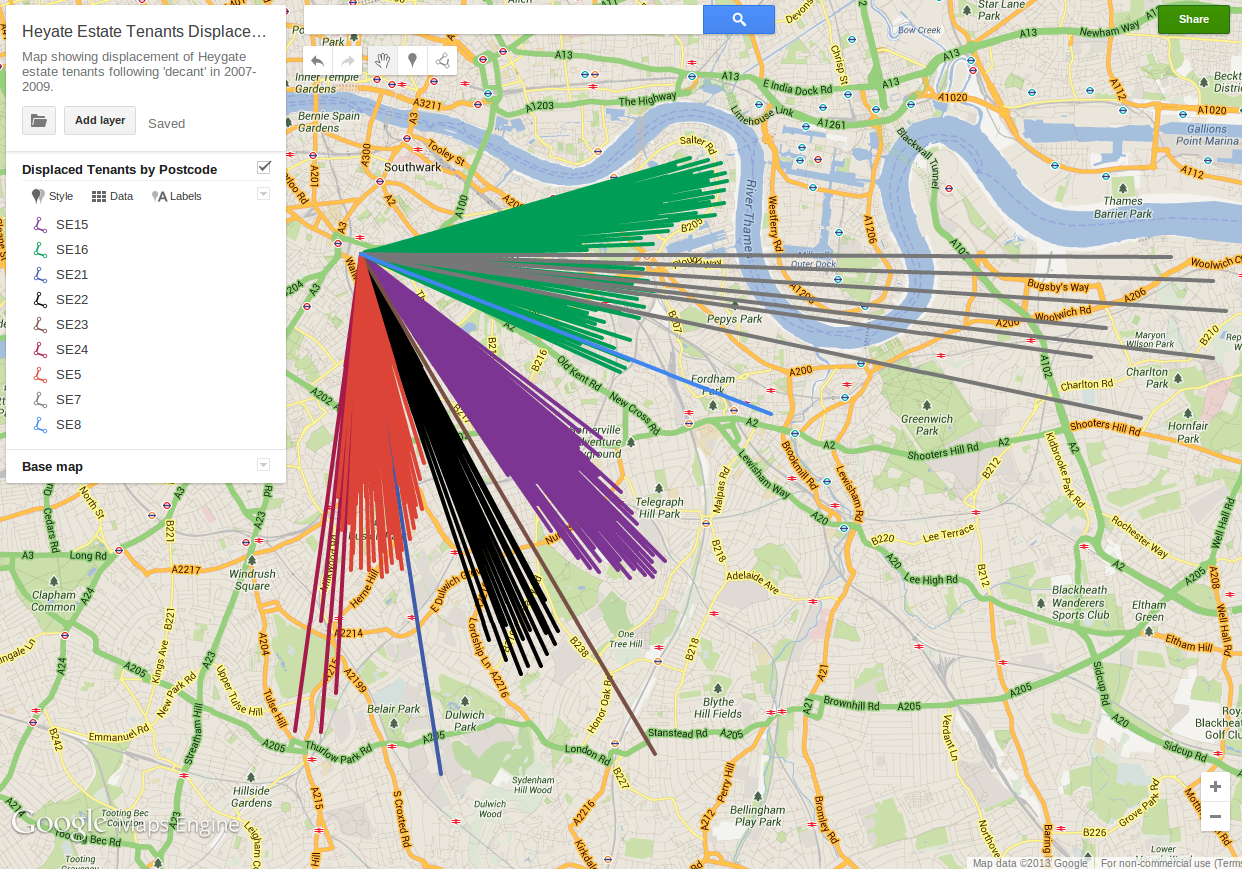
The original plans for the Elephant and Castle opportunity area envisaged 4,200 new homes including over 1,000 replacement council homes. In the event the number of homes has already been exceed by nearly a third and not one replacement council home has been built in the opportunity area.
Some people are asking whether the revolving doors between Southwark's elected representatives and property developers at the Elephant may have played a role in Southwark's failure to secure a more equitable outcome for the regeneration.
For example, Council leader Peter John led Southwark from 2010 to 2020 and was the one who signed the questionable development partnership agreement with Lendlease:
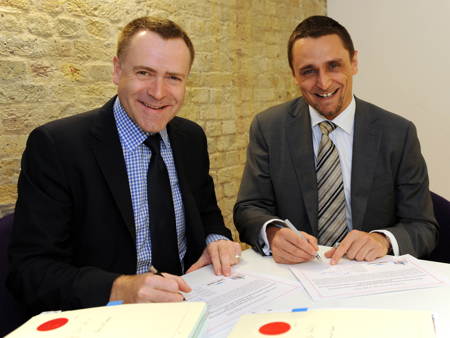
Immediately after stepping down he was appointed Chairman of the Terrapin Group, a lobbying firm, whose client list is dominated by property developers including the Council's development partner for the Heygate estate (Lendlease) and the E&C shopping centre (Delancey).
Footnotes: [^1]: Southwark gave planning consent to this scheme (as many others) allowing it to forgo the requirement to provide social rented housing. This scheme was however required to provide 115 intermediate affordable homes. These were then purchased by Southwark Council from the developer for an undisclosed sum in 2018. 79 homes are now let by the Council as council homes, the remaining 36 are being let at intermediate rents to households on the Council's new intermediate housing waiting list.
[^2]: Includes 173 ensuite student units